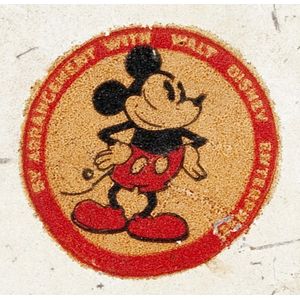Vintage Radios: Astor & Crosley Receivers
You must be a subscriber, and be logged in to view price and dealer details.
Subscribe Now to view actual auction price for this item
When you subscribe, you have the option of setting the currency in which to display prices to $Au, $US, $NZ or Stg.
- Bakelite - Bakelite was the first completely synthetic man-made substance. Bakelite was invented in 1909 by an independent New York chemist Leo H. Baekeland. It was called the "material of a thousand uses" and used to make everything from car parts to jewellery.
Although nearly all plastic from this period is known as ?Bakelite', it is important to remember that this is an umbrella term that covers many different early plastics such as Lucite and cellulose acetate, and includes Bakelite.
We often think of the colour of Bakelite items as dark brown, but it was manufactured in various colours including yellow, butterscotch, red, green and brown.
Bakelite could also be transparent, or marbleised by mixing two colours. Plastics were cheap to produce and could be moulded or carved in a huge variety of ways.
Bakelite is most commonly associated with radio cases of the 1930s, telephones and kitchen utensils, but it was also used extensively in jewellery manufacture.
Early designs from the 1920s were plainer and simpler than later examples. Geometric and floral patterns typical of Art Deco styling were popular.
During its heyday in the 1930s, Bakelite jewellery was stocked by the most prestigious stores, such as Saks, Harrods and Macy?s, who dedicated a shop window display to it in 1935.
Coco Chanel featured Bakelite items in her accessories collection and the material was praised frequently in Vogue magazine.
Manufacture of some consumer Items were suspended in 1942 in order to concentrate manufacturing on the war effort.
Small items made of Bakelite are now valuable collectables. Andy Warhol was an avid collector, and when he died in 1987, his pieces sold for record prices at Sotheby's. - Embossed / Repousse - Embossing, also known as repousse, is the technique of decorating metal with raised designs, by pressing or beating out the design from the reverse side of the object.It is the opposite of chasing, where the decoration is applied from the front. An embossed or repoussed object may have chasing applied to finish off the design.
This item has been included into following indexes:
-
radios, manufacturers
- Astor 35
- Bakelite, other colours 100
- Crosley 9
- Mickey Mouse 4
Visually similar items

Jeff Scholes, plate in delft blue, 1960s, diameter 29.5 cm

Clarice Cliff designed by Dame Laura Knight, circus pattern Bizarre plate, hand painted with circus seals, c.1934, with factory mark and Laura Knight facsimile signature to the base. Diameter 25.5 cm

Fitzroy: 1941 Member?s Season Ticket, with fixture list & hole punched for each game attended, and Foster?s Lager advert on reverse. G/VG condition

Fitzroy: 1945 Member?s Season Ticket, with fixture list & hole punched for each game attended. Fair/G condition
